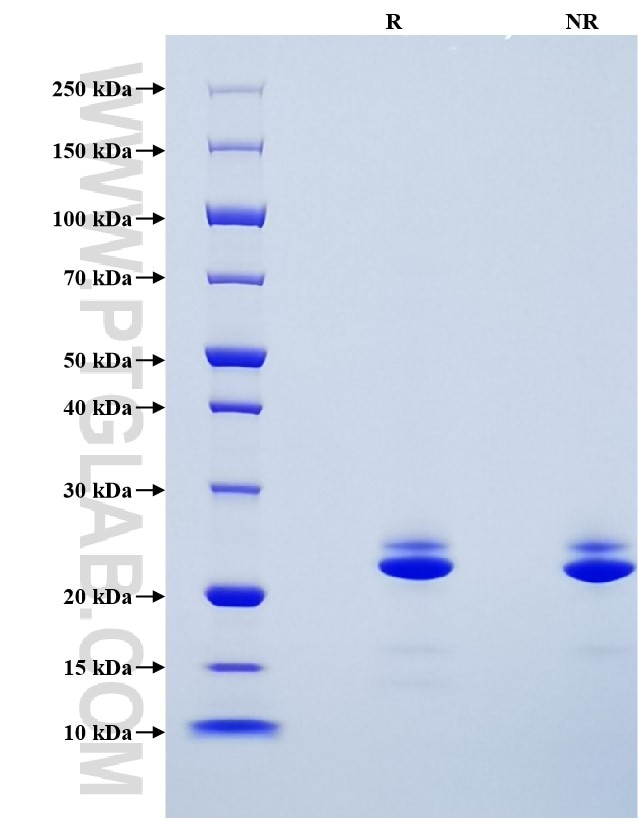Recombinant Human FGF-21 protein (His Tag)
Species
Human
Purity
>90 %, SDS-PAGE
Tag
His Tag
Activity
not tested
Cat no : Eg0102
Validation Data Gallery
Product Information
| Purity | >90 %, SDS-PAGE |
| Endotoxin | <0.1 EU/μg protein, LAL method |
| Activity |
Not tested |
| Expression | HEK293-derived Human FGF-21 protein His29-Ser209 (Accession# Q9NSA1(L174P)) with a His tag at the N-terminus. |
| GeneID | 26291 |
| Accession | Q9NSA1 |
| PredictedSize | 20.2 kDa |
| SDS-PAGE | 22-25 kDa, reducing (R) conditions |
| Formulation | Lyophilized from 0.22 μm filtered solution in PBS, pH 7.4. Normally 5% trehalose and 5% mannitol are added as protectants before lyophilization. |
| Reconstitution | Briefly centrifuge the tube before opening. Reconstitute at 0.1-0.5 mg/mL in sterile water. |
| Storage Conditions |
It is recommended that the protein be aliquoted for optimal storage. Avoid repeated freeze-thaw cycles.
|
| Shipping | The product is shipped at ambient temperature. Upon receipt, store it immediately at the recommended temperature. |
Background
Fibroblast growth factor 21 (FGF21) is a peptide hormone that is expressed across several tissues, predominantly in liver and adipocyte tissues, and, to a lower extent, in the pancreas, skeletal muscle, heart, kidneys and testes. FGF21 plays a role in regulating adaptation to various metabolic abnormalities. In the liver, FGF21 plays an important role in the regulation of fatty acid oxidation both in the fasted state and in mice consuming a high-fat, low-carbohydrate ketogenic diet. FGF21 also regulates fatty acid metabolism in mice consuming a diet that promotes hepatic lipotoxicity.
References:
1. Fisher FM. et al.(2016) Annu Rev Physiol. 2. Strowski MZ. et al. (2017) Horm Mol Biol Clin Investig. 30(2). 3. Nishimura T. et al.(2000) Biochim Biophys Acta.1492(1):203-6. 4. Kharitonenkov A. et al. (2009) Curr Opin Investig Drugs.10(4):359-64.
